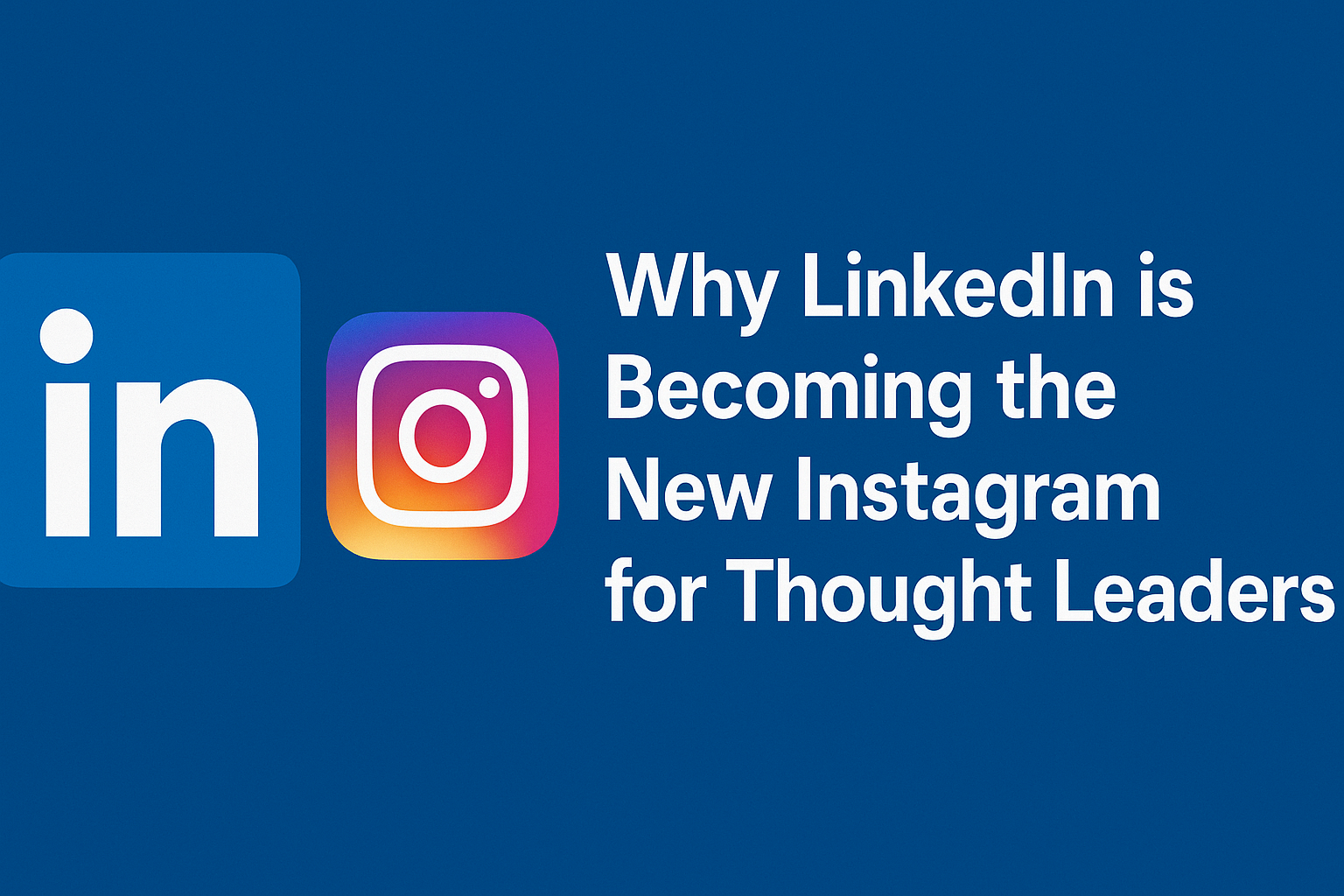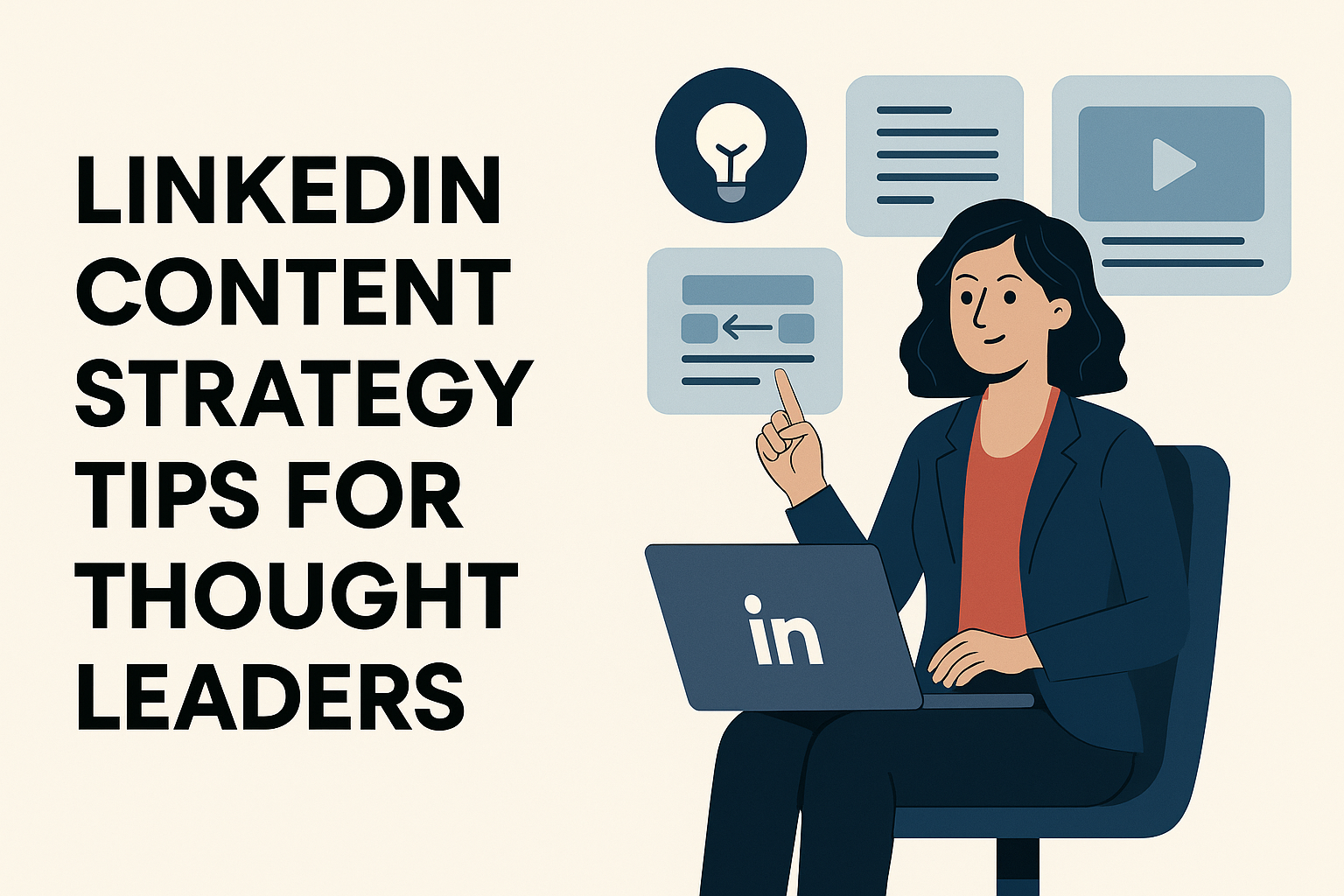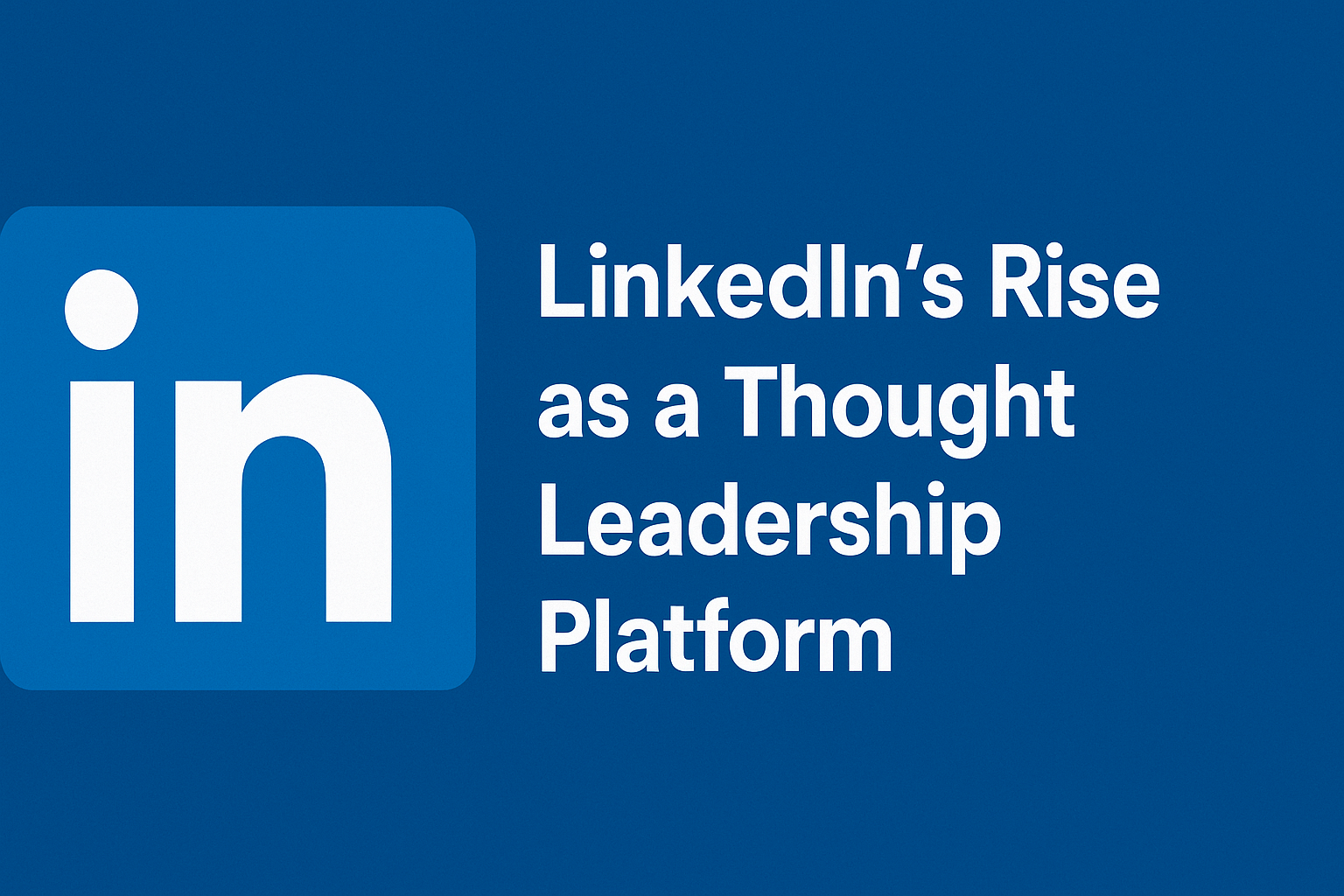In the past, Instagram was the platform of choice for influencers, creators, and entrepreneurs looking to build visibility. But in 2025, professionals are shifting toward a more focused, credibility-driven platform: LinkedIn. What started as a digital resume board has now evolved into a thriving ecosystem for thought leadership on LinkedIn, content creators, and business leaders alike.From C-suite executives to solopreneurs, more people are embracing LinkedIn personal branding to establish authority and reach highly targeted audiences. And unlike Instagram, where visuals dominate, LinkedIn rewards value-packed insights, industry commentary, and meaningful professional conversations.
Why LinkedIn is Becoming the New Instagram for Thought Leaders
While Instagram still holds cultural clout, LinkedIn is quickly becoming the go-to space for modern thought leaders. Here’s why:

Content Reach and Organic Visibility: LinkedIn’s algorithm still favors organic reach. A single, well-written post can reach thousands without spending a dime.
Professional Context: Unlike Instagram’s entertainment-first model, LinkedIn is designed for professional interaction. That makes it easier to build credibility and trust.
Audience Intent: People come to LinkedIn to learn, grow, and connect professionally—not just to scroll for inspiration.
Community Engagement: Thoughtful comments, shares, and DMs are more common, and they tend to lead to deeper connections and even real business opportunities
If you want to build your brand on LinkedIn, now is the time to double down.
The Power of Thought Leadership on LinkedIn
Thought leadership on LinkedIn isn’t just about showing up it’s about showing up with purpose. Thought leaders use the platform to:
– Establish Authority: Sharing unique insights positions you as a go-to expert.
– Build Relationships: Engage with decision-makers, industry peers, and prospects.
– Drive Conversions: Strategic content can funnel leads to your website, newsletter, or services.
– Strengthen Trust: Consistency in thought leadership builds brand equity and credibility over time.
LinkedIn users trust what they read—especially when it’s original, relevant, and actionable.The Power of Thought Leadership on LinkedIn
Thought leadership on LinkedIn isn’t just about showing up—it’s about showing up with purpose. Thought leaders use the platform to:
– Establish Authority: Sharing unique insights positions you as a go-to expert.
– Build Relationships: Engage with decision-makers, industry peers, and prospects.
–Drive Conversions: Strategic content can funnel leads to your website, newsletter, or services.
– Strengthen Trust: Consistency in thought leadership builds brand equity and credibility over time.
LinkedIn users trust what they read – especially when it’s original, relevant, and actionable.
How to Build a Personal Brand That Converts on LinkedIn
If you’re ready to build a personal brand that converts, here are steps to get started:
1. Define Your Personal Brand on LinkedIn
Ask yourself:
– What are you known for?
– What do you want to be known for?
– Who is your ideal audience?
Craft a brand message that’s consistent across your headline, summary, and posts.
2. Optimize Your Profile
– Use a professional headshot and banner image.
-Craft a compelling headline that highlights your value.
– Fill out your “About” section with a clear story of who you are and what you offer.
– Add featured content to showcase key assets (PDFs, posts, links, etc.).
3. Engage Consistently
Posting once or twice a week is a good start. Engage with comments, send thoughtful DMs, and join relevant conversations.
LinkedIn Content Strategy Tips for Thought Leaders
Creating a LinkedIn content strategy doesn’t have to be complicated. Focus on these elements:
Content Formats: Text posts, native videos, carousels, long-form articles, and polls.
Content Pillars: Industry insights, personal experiences, client success stories, and trend commentary.
Posting Frequency: Aim for 3–5 times per week. Don’t just post engage with your audience.
Tone of Voice: Be professional, yet relatable. Thoughtful, not salesy.

Make your content easy to read and mobile-friendly most users scroll on their phones.
Metrics that Matter: Measuring Your Personal Brand Success on LinkedIn
Tracking performance is essential to know what’s working and what’s not. Key performance indicators (KPIs) include:
– Profile Views: Indicates how often people are checking out your profile after seeing your content.
– Post Engagement: Track likes, comments, and shares to measure resonance.
– Follower Growth: Are you steadily increasing your audience base?
– Click-throughs and Leads: Measure the number of clicks to your website or newsletter.
Connection Quality: Are you attracting the right people your target audience?
Instagram vs. LinkedIn: Where Should You Focus in 2025?
Here’s how the two platforms compare for professionals and thought leaders:
| Feature | ||
| Audience Intent | Entertainment, lifestyle | Business, networking, learning |
| Organic Reach | Declining without ads | Strong for high-value content |
| Content Type | Visual-heavy (reels, stories, photos) | Insight-driven (text, videos, articles) |
| Lead Generation | Indirect, DMs and links in bio | Direct, with CTAs and profile links |
| ROI on Content | Hard to track, influencer-focused | Easier to track, more B2B conversions |
If your goal is to grow audience on LinkedIn, generate leads, and establish long-term brand equity, LinkedIn is a better investment in 2025.
Final Thoughts: Embracing the Shift
The social media landscape is evolving, and so should your strategy. Instagram has its place—but if you’re a professional, coach, consultant, or creator looking to build your brand on LinkedIn, the time is now.
Focus on creating genuine, valuable content. Embrace thought leadership. Measure your impact. Most importantly, build with intention.
Remember: Your LinkedIn profile isn’t just a resume it’s your personal brand in motion.
FAQs
1. Why is LinkedIn better than Instagram for thought leadership?
LinkedIn offers a professional network, higher engagement for B2B content, and better tools for lead generation. Instagram is visual-first, while LinkedIn supports text-based value-driven content that builds credibility.
2. How can I grow my personal brand on LinkedIn?
Start by optimizing your profile, posting consistently, engaging with your network, and sharing original insights. Use storytelling, data, and personal experiences to connect with your audience.
3. What kind of content works best for thought leaders on LinkedIn?
Text posts, personal stories, carousels, LinkedIn videos, and thought-provoking polls perform well. Consistency and authenticity matter most.
4. Can LinkedIn generate leads and conversions like Instagram?
Yes and often more effectively. LinkedIn lets you add direct CTAs, links, and professional offers, while conversations in comments or DMs are typically more intent-driven.
5. How do I measure the success of my personal brand on LinkedIn?
Monitor metrics like engagement rate, profile views, post reach, follower growth, and the quality of your new connections. Also track lead generation through messages or external link clicks.
At Balistro, we specialize in helping businesses grow through effective digital marketing strategies. From Google Ads to Meta Ads, we deliver data-driven campaigns that maximize your ROI and drive real results. If you’re looking to boost your online presence, generate leads, or scale your e-commerce business, our expert team is here to help. Contact us today to learn more about how we can support your advertising needs!



